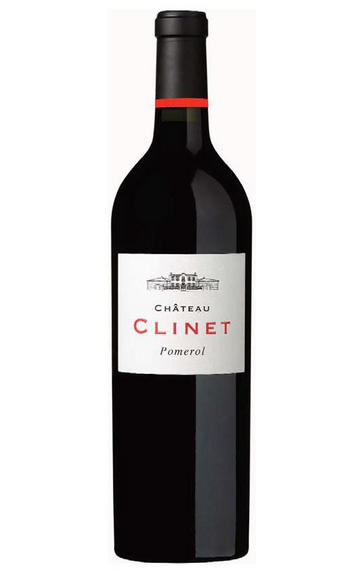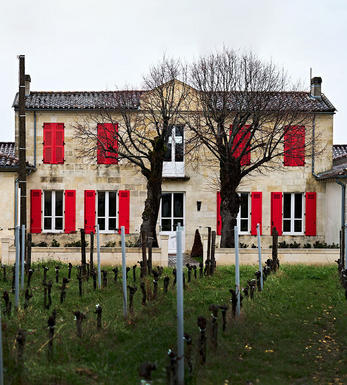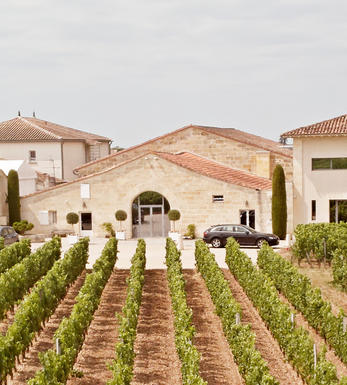
2008 Château Clinet, Pomerol, Bordeaux

Critics reviews
Robert M. Parker, Jr. - 02/05/2011
Another resounding success for the vintage, the opaque purple-colored 2008 Clinet (14.4% alcohol) is composed of 85% Merlot, 10% Cabernet Franc and 5% Cabernet Sauvignon. Yields of 38 hectoliters per hectare, while higher than in 2010, were still modest. Another powerful, big, large-scaled effort, the 2008 exhibits an inky/purple color as well as sweet creme de cassis, blackberry, plum, Asian spice, licorice and incense notes. Layered and full-bodied with stunning purity and a 40+ second finish, this beauty needs 3-5 years of bottle age and should keep for 25-30 years.
Robert Parker- Wine Advocate- May 2011
This is the greatest Clinet since the incredible duo made by the late Jean-Michel Arcaute in 1989 and 1990. The dense purple-colored 2008 offers up beautiful floral, blackberry, and pen ink-like notes, exceptional intensity, that multilayered texture that seems to be commonplace in the top 2008 Pomerols, silky but elevated tannins, good freshness, precision, and nuance, a substantial size, and an extremely long finish with not a hard edge to be found. It should evolve for 30+ years.
Robert Parker - Wine Advocate - Apr 2009
About this WINE

Château Clinet
Château Clinet is a wine estate in Pomerol on the Right Bank of Bordeaux. It is owned and run by Ronan Laborde and his partner, Monique Bailly. Ronan took the helm here in 2004.
The estate’s 11 hectares of vines sit atop the famed Pomerol plateau. The vineyard is planted to a majority of Merlot (75%), which Ronan feels is highly suited to the plateau’s iron-rich clay soils. There is also 25% Cabernet Sauvignon. Though rare in Pomerol, Cabernet Sauvignon has long been an important aspect of Clinet’s character; it once made up 50% of the vineyard here, Ronan reports.
Clinet came to the attention of many collectors when its 1989 vintage received a 100-point score from the critic Robert Parker; it has remained one of Bordeaux’s most sought-after names ever since. Another perfect Parker score followed for the 2009 vintage.

Pomerol
Pomerol is the smallest of Bordeaux's major appellations, with about 150 producers and approximately 740 hectares of vineyards. It is home to many bijou domaines, many of which produce little more than 1,000 cases per annum.
Both the topography and architecture of the region is unremarkable, but the style of the wines is most individual. The finest vineyards are planted on a seam of rich clay which extends across the gently-elevated plateau of Pomerol, which runs from the north-eastern boundary of St Emilion. On the sides of the plateau, the soil becomes sandier and the wines lighter.
There is one satellite region to the immediate north, Lalande-de-Pomerol whose wines are stylistically very similar, if sometimes lacking the finesse of its neighbour. There has never been a classification of Pomerol wines.
Recommended Châteaux : Ch. Pétrus, Vieux Ch. Certan, Le Pin, Ch. L’Eglise-Clinet, Ch. La Conseillante, Ch. L’Evangile, Ch. Lafleur, Trotanoy, Ch. Nenin, Ch. Beauregard, Ch. Feytit-Clinet, Le Gay.

Cabernet Sauvignon Blend
Cabernet Sauvignon lends itself particularly well in blends with Merlot. This is actually the archetypal Bordeaux blend, though in different proportions in the sub-regions and sometimes topped up with Cabernet Franc, Malbec, and Petit Verdot.
In the Médoc and Graves the percentage of Cabernet Sauvignon in the blend can range from 95% (Mouton-Rothschild) to as low as 40%. It is particularly suited to the dry, warm, free- draining, gravel-rich soils and is responsible for the redolent cassis characteristics as well as the depth of colour, tannic structure and pronounced acidity of Médoc wines. However 100% Cabernet Sauvignon wines can be slightly hollow-tasting in the middle palate and Merlot with its generous, fleshy fruit flavours acts as a perfect foil by filling in this cavity.
In St-Emilion and Pomerol, the blends are Merlot dominated as Cabernet Sauvignon can struggle to ripen there - when it is included, it adds structure and body to the wine. Sassicaia is the most famous Bordeaux blend in Italy and has spawned many imitations, whereby the blend is now firmly established in the New World and particularly in California and Australia.


Buying options
Add to wishlist
Description
Another resounding success for the vintage, the opaque purple-colored 2008 Clinet (14.4% alcohol) is composed of 85% Merlot, 10% Cabernet Franc and 5% Cabernet Sauvignon. Yields of 38 hectoliters per hectare, while higher than in 2010, were still modest. Another powerful, big, large-scaled effort, the 2008 exhibits an inky/purple color as well as sweet creme de cassis, blackberry, plum, Asian spice, licorice and incense notes. Layered and full-bodied with stunning purity and a 40+ second finish, this beauty needs 3-5 years of bottle age and should keep for 25-30 years.
Robert M. Parker, Jr. - 02/05/2011
wine at a glance
Delivery and quality guarantee